"Everybody, except myself, have used, and admit to having used my photographs ... and often also without mentioning my name", lamented Lucia Moholy in 1956, "everyone – except myself – have derived advantages from using my photographs, either directly, or indirectly, in a number of ways, be it in cash or prestige, or both".1
The photographs in question being of and from the Weimar and Dessau Bauhauses, photos which played, and continue to play, a not unimportant role in mediating Bauhaus to a wider audience. But which in doing such don't necessarily help mediate Lucia Moholy to that wider audience. On the contrary, they tend to hold her in a relative anonymity.
With Lucia Moholy – The Image of Modernity the Bröhan Museum, Berlin, help explain how such a situation came to be, why Lucia Moholy's lament is both justified and an important lesson, and also how it relates to popular understandings of Bauhaus.
But for all seek to redress some of the ongoing consequences of that relative anonymity.......
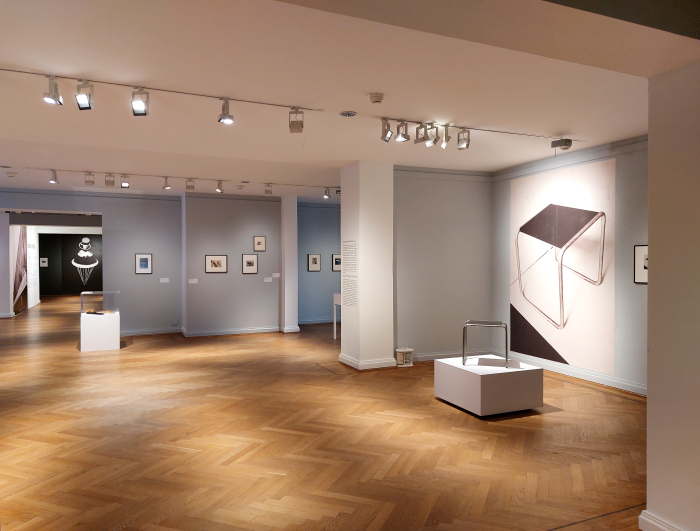
Born on January 18th 1894 in Karlín, then a village to the north of Prague, today a northern suburb of Prague, the then, Lucia Schulz attended a Germanophone lyceum in Prague, graduating in 1910 whereupon she qualified as an English and German teacher and subsequently attended lectures2 in philosophy and art history at Prague University, before relocating to Germany in 1915; initially to Wiesbaden, subsequently Leipzig and Berlin, and where she held numerous editorial positions with various newspapers and publishing houses. In December 1919 Schulz moved from Berlin to Hamburg where she worked in the Adolf Saal bookshop, and possibly also in the Adolf Saal publishing house, a, as best we can ascertain, progressive, social reform orientated bookshop/publisher, before in April 1920 a chance meeting on a visit to Berlin with a young Hungarian artist by the name László Moholy-Nagy saw her return to Berlin, where on January 18th 1921, Lucia's 27th birthday, Lucia and László married; whereupon Lucia Schulz became Lucia Moholy3, a name she maintained following the couple's separation in 1929.
Following her marriage to László Lucia continued working in publishing in Berlin, before in 1923 the pair moved to Weimar where László had been appointed to the Bauhaus teaching staff as a replacement for Johannes Itten.
And where, in many regards, the biography of the photographer Lucia Moholy begins.
By all accounts Lucia Schulz's first practical experience with photography was during time spent at the Worpswede artist colony, near Bremen, in the summers of 1918 and 1919, before, following her move to Weimar, Lucia Moholy first undertook a year long apprenticeship at the Otto Eckner photo studio in Weimar, and subsequently attended photography classes at the Königliche Akademie für graphische Künste und Buchgewerbe in Leipzig, the contemporary Hochschule für Grafik und Buchkunst Leipzig.
And although the why, the question as to where the interest in, and the decision to actively pursue, photography arose, is very relevant, and is something which, arguably, should feature at this point in our text, we will save it for later.
When Bauhaus moved from Weimar to Dessau, Lucia and László moved with it; and which is where, in many regards, Lucia's lament, Lucia's grievances, and, ironically, Lucia's slide into a relative anonymity, begins.
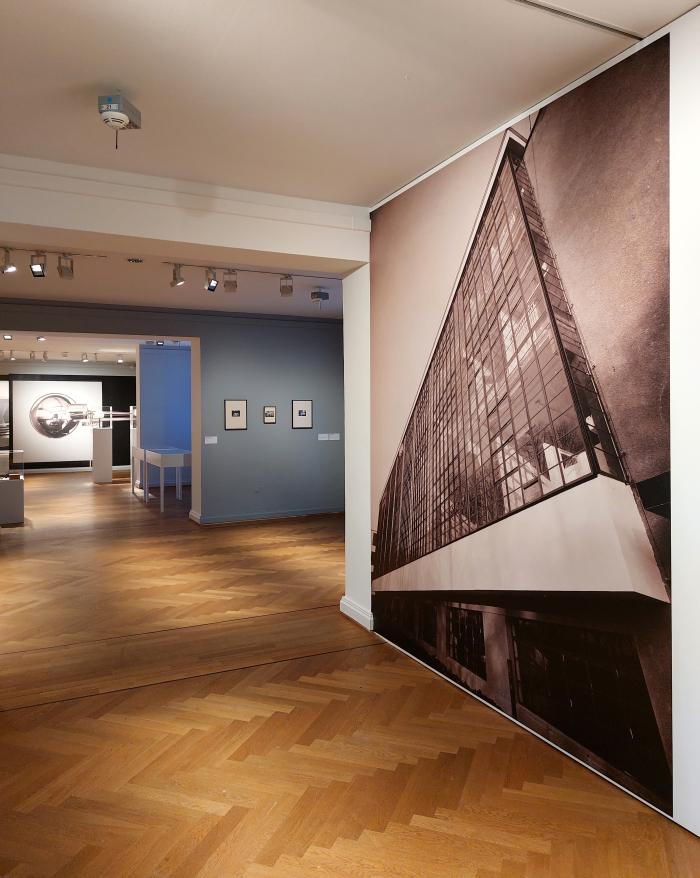
As an exhibition The Image of Modernity, effectively, most efficaciously, begins, as did the schooling at Bauhaus, with the Vorkurs, that play with shape and scale and volume and material and light and mass that brought expressionist art into three dimensions, helped the students develop appreciations of, and positions to, form and weight and dependencies; and of which, as the Bröhan Museum note, only very few actual objects have physically survived. Many more however have survived in photos. In photos by Lucia Moholy, including, and as can be enjoyed in The Image of Modernity, works by the likes of, and amongst others, Marianne Brandt, Corona Krause or Anni Wildberg. Works which were it not for Moholy's photos would be lost. As would impressions of the sort of constructions the Vorkurs produced. And the names of a great many Bauhäusler.
From the Vorkurs the Bauhäusler moved on, as does The Image of Modernity, to the workshops and to developing and realising objects, objects which Moholy also photographed and whose photographs were, as The Image of Modernity neatly elucidates, often printed in contemporaneous publications; publications which helped promote Bauhaus, its positions and protagonists. And its products, Moholy's photos also being used, for example, in the 1925 Bauhaus GmbH catalogue, that platform via which Bauhaus objects became Bauhaus products, via which Bauhaus purveyed, monetised, their vision of a brave new future.4
And a promotion of Bauhaus through Moholy's photos that takes, and took on, a particular, and particularly important, role in context of the new buildings in Dessau, for all Walter Gropius's school building, that much fabled building that so often stands proxy for Bauhaus, and which as The Image of Modernity demonstrates and discusses via a presentation of international newspapers and magazines from the 1920s, was largely disseminated to a global audience via Lucia Moholy's photos.
In addition Lucia Moholy played an important role in publicising the projects of the Bauhaus theatre workshop, The Image of Modernity featuring photos of stage settings and costumes for, for example, the Mechanisches Ballet by Kurt Schmidt & Friedrich Wilhelm Bogler, Circus by Xanti Schawinsky or Oskar Schlemmer's Triadische Ballet; and there are also a couple of photos of the Bauhauskapelle, that for us criminally overlooked component of Bauhaus. We're not saying the Bauhauskapelle made Bauhaus as important in terms of developing music positions of the inter-War decades as Bauhaus was in terms of developing design positions; but are saying that as a, by all accounts, free jazz outfit who incorporated elements of eastern European and Russian folkloric music, and whose instrumentation implied Dadaistic sympathies, they very much give the impression of being a most interesting and relevant band in an age of important developments in music. And of being a lot of fun.
But that unfortunately in age when phonographic reproduction was in its infancy, and a tune played live being even more transitory than a Vorkurs construction.

When László left Bauhaus Dessau in 1928 Lucia, who was never formally part of the Bauhaus staff nor enrolled as a student, left with him, the couple returning to Berlin, where Lucia continued her photography, essentially in a freelance capacity, including a commission as a stage photographer at Berlin's Kroll Opera House5, in which context, and as can be seen in, The Image of Modernity, Lucia photographed László's scenography for the 1929 production of Jacques Offenbach's Hoffmanns Erzählungen; and also helped organise the publication of László and Gropius's 1930 book Die Bauhausbauten in Dessau, a publication which features some 50+ photographs by Moholy, and which technically must be considered as a work by Gropius, Moholy-Nagy and Moholy. In 1930 Lucia Moholy joined the staff at Johannes Itten's private art college in Berlin, where she headed the photography department, and which remained her primary occupation until 1933 when, on account of her communist leanings, and close association with leading communist politicians, she was obliged to (very rapidly) flee Germany and the NSDAP.
And while Lucia Moholy's tenure as Bauhaus's unofficial official photographer was brief in context of Bauhaus's biography, only from 1923 to 1928, and, and certainly by contemporary standards, relatively limited, she calculates she took "between 500 and 600" photos6, which today is about an hour's worth, in that period her photographs were, as The Image of Modernity tends to argue, one of the primary conduits by which Bauhaus was known by, became known to, a wider public.
Yet Lucia Moholy is popularly unknown.
Why?
How did she become so anonymous?
Why, you ask yourself while wandering through The Image of Modernity, and increasingly appreciating as you do, the very close connections between Lucia Moholy, Bauhaus and popular understandings of Bauhaus, and also recognising as you wander ever more photos of Bauhaus, its works, buildings and protagonists, that you've seen a thousand times or more, why, you ask yourself, isn't Lucia Moholy one of those half dozen or so Bauhäusler everyone can name?
???
As oft discussed in these dispatches there are a great many reasons why any creative can slip into anonymity, including, and very much in context of European creatives active in the 1920s and 30s, the myriad consequences of the Second World War. In addition, and as the Bröhan Museum's previous exhibition Regard! Art and Design by Women 1880–1940 helped elucidate, female creatives past (and present) were (are) subject to a great many problems and challenges over and above those of their male contemporaries, not least a long-standing popular understanding of female creatives as being less talented than their male contemporaries, of creativity being a male dominion to which females are occasionally permitted access to as muses. Apart from textiles and ceramics, obviously. Which are female dominions. Yes, we're being satirical. And, yes, we consider it a truly diabolical state of affairs, one for whom's eradication we are all responsible........ And while many of those general and gender specific problems invariably apply to Moholy, as The Image of Modernity helps elucidate, over and above such Lucia Moholy was subject to a couple of very specific problems.
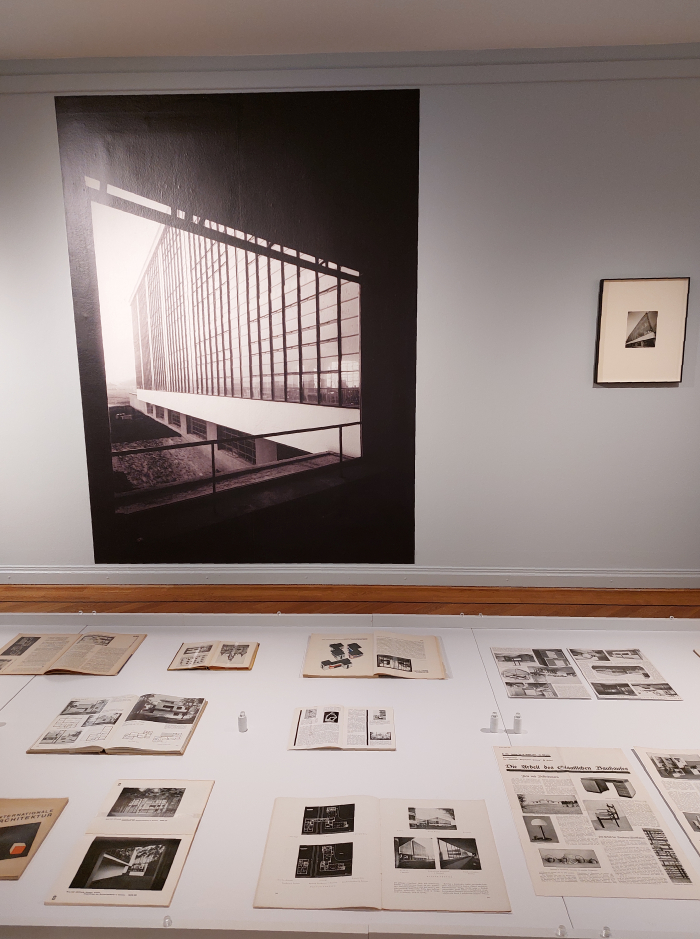
Although an active protagonist at Bauhaus Lucia Moholy was, as noted above, never part of the Bauhaus staff nor ever a Bauhaus student; rather Lucia Moholy was, if one so will, and perhaps a little over flippant but we'll argue rhetorically appropriately so, simply László's wife. A wife who took a few photos. For free. And a situation which, as far as we can ascertain she was happy enough with; there was, as best we understand7, an agreement that she retained copyright over her photos, was to be paid a fee when her photos were used by external sources, and was to be consulted for her approval before any use whether by Bauhaus or others, but while living in Weimar and Dessau she seems to have been happy enough with Bauhaus using her photos for their direct purposes without direct payment. If a situation she in any case may have had little choice in: Ida Gropius, wife of Walter, noting once that the "meagre budget"8 of the school meant that the Meister's wives were expected to work voluntarily for the school; a reality Moholy felt was worthy of a book, noting in an unpublished post-War text that, "too much has been written about the Meister" and that more attention should be given to the the wives of the Meister who, as she noted, "had no official status and yet played a key role in the history and post-history of Bauhaus".9 As her own biography tends to unequivocally confirm.
And she seems, again as best we can ascertain, to also have been perfectly happy that her pictures were published anonymously in the 1920s and 30s. Whereby they weren't always, as can be seen in The Image of Modernity sometimes she was named, but not always, many, ¿the greater many?, uses of her photos being anonymous. Whereby there is an argument to made that such was not only normal then, but is normal now: Moholy's photos were used by Bauhaus, essentially, as publicity photos, PR photos, product photos, works which don't always come with a photographers name, works which more often than not, then as now, are anonymous. Whereby Lucia Moholy is an excellent case in point of why, from the perspective of the photographer, pun intended, they should always be credited, regardless of context.10
Yet, despite being (largely) anonymous then, there was no reason that Moholy should have retained her, relative, anonymity until today. Post-Bauhaus, certainly post-War, there was ample opportunity for her contribution to Bauhaus to have been revealed and dissected; however, Lucia Moholy's photos continued to be published anonymously in later decades, long after Bauhaus had ceased to be, and once it had become a moment in design (hi)story to be posthumously re-constructed and re-discovered, had become a group of creatives and their works rather than an educational institute. And which brings us to the first of Lucia Moholy's very specific problems: Walter Gropius.
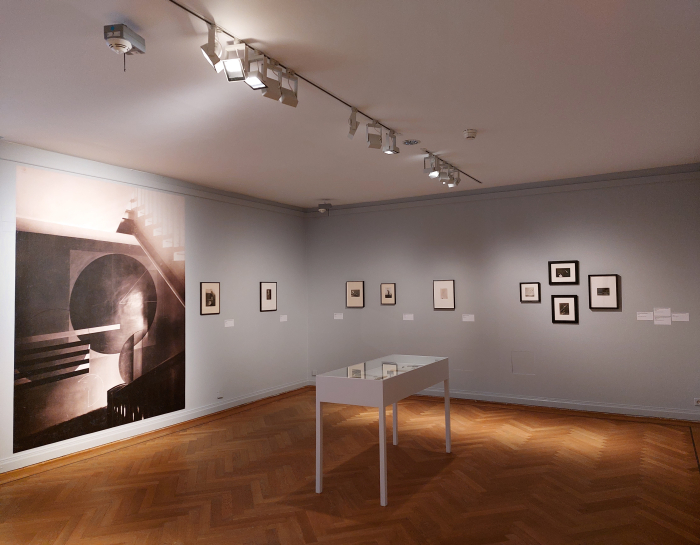
As noted above, in 1933 Lucia Moholy was forced to flee Germany, travelling via Prague, Vienna and Paris to London, and by necessity, left her glass negatives in Berlin, specifically with László, then her ex-husband but with whom she was still on friendly terms. What exactly happened next is lost in the mists of time; however, somehow, by some route, at least a portion of Lucia Moholy's glass negatives found their way to Walter Gropius, who took them with him to America, who very clearly felt that he possessed the rights to them; and who used them, without consulting Moholy, without paying Moholy, and without crediting Moholy. And also allowed others to use Moholy's work: without consulting Moholy, far less insisting she was named as the photographer or ensuring she received payment. As per the agreement they had once had. Arguably still had.11
And thus in the immediate post-Bauhaus decades a great many, though by no means all, of those published and exhibited photos of Bauhaus, its works, buildings and protagonists were Moholy's. A great many of those published and exhibited photos which helped carry Bauhaus into the post-War decades and allowed it to remain a thing, to be re-constructed and re-discovered long after it had ceased to be, were Moholy's. But are/were never credited as such. Are/were published and exhibited anonymously, photographer unknown. Including, as can be seen in The Image of Modernity, those published and exhibited in context of the MoMA New York's 1938 exhibition Bauhaus 1919 - 1928, an exhibition that, as oft opined in these dispatches, was instrumental in both establishing the enduring Bauhaus legend and also in allowing the likes of Gropius and Breuer and, arguably, Mies van der Rohe to establish themselves in America, making them the true vanguards of European Modernism12; an exhibition for which, as the Bröhan Museum point out, there would have been only very few actual 3D objects available for show, certainly not the transient Vorkurs constructions, or those works by designers who'd long left Bauhaus and weren't now in America. Or that many ways in which to represent Gropius's school building and the Meisterhäuser, in manners that were easily digestible and allowed for study of both interior and exterior. But thanks to Moholy there were a lot of photos of Bauhaus, its works, buildings and protagonists. And thus Bauhaus 1919 - 1928 would have been a perfect platform for revealing the work and contribution of Lucia Moholy, of providing a starting point for more detailed research into, and dissection of, Lucia Moholy and Lucia Moholy's place in the (hi)story of Bauhaus and inter-War creativity in general: would have, had the photographer not remained anonymous.
Photos by an anonymous photographer which Lucia Moholy regularly saw wherever publications discussed Bauhaus, and knew weren't anonymous. And knew were subject to copyright.
And photos reproduced from glass negatives which she wanted back, not only because they were hers, but because without the glass negatives she was unable to produce her own photographs by way of fulfilling requests for lectures, essays, etc and thereby not only unable to earn money from her work, but unable to ensure her telling of the story of her time at Bauhaus was told, to place herself at Bauhaus, as a protagonist at Bauhaus, as a component of the (hi)story of Bauhaus.13 Without the negatives she was voiceless, anonymous, the ex-wife of László.
And so from her exile in London she contacted László, by now in America, to enquire if he knew anything, László was however at the point suffering under the Leukaemia that led to his tragically early death, and too ill to answer; but Sibyl Moholy-Nagy, László's second wife, subsequently told Moholy that in the 1930s the glass negatives had been moved to Walter Gropius's house, which came as news to Moholy, but also that she assumed that they had been destroyed along with Gropius's Berlin house by a War-time bomb.
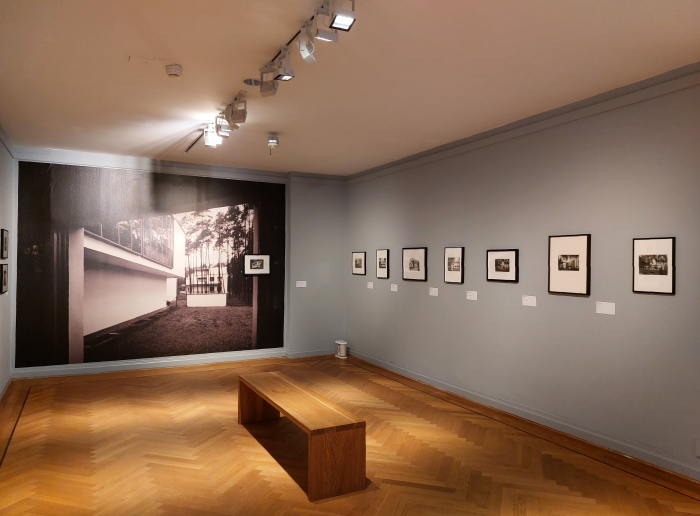
But still Lucia Moholy's photos appeared, celebrating Bauhaus as the decisive moment in European creativity and helping post-Bauhaus authors re-construct the (hi)story of that group of creatives and their works, yet appeared as the anonymous works of some unknown photographer, clearly the negatives hadn't been destroyed, or at least not all, and so she pressed Walter Gropius for details, and he, and after much prevaricating and vagueness and stalling, eventually, admitted he had at least some of the original glass negatives and had used them.
And when Moholy asked for them back he informed her that that was impossible as he still needed them. And in any case he'd promised them to a museum when he no longer needed them. But she could have some copies if she wanted.14
Which is clearly awful.
On so, so, many levels.
One barely knows where to begin.
And one could argue that Gropius stole Moholy's negatives. And that to a degree that could stand up in court. He knew exactly what he had, knew the agreements with Moholy, knew Moholy's copyright claims, and knew Moholy was still alive. But completely, unashamedly, appropriated her negatives as his property for his purposes.
Why did Gropius do that? We no know. We only know that he did. And that here isn't the time nor place for a discussion on the wider aspects of the personality and character of Walter Gropius; The Image of Modernity isn't about Walter Gropius, it's about Lucia Moholy. If part of the necessity of The Image of Modernity is down to Gropius.
A necessity because through his actions Walter Gropius contributed directly to Lucia Moholy's contemporary relative anonymity, contributed directly to Lucia Moholy being denied for so long, and at such an important period, her claim to her rightful place in the (hi)story of Bauhaus.
And also contributed directly to Lucia Moholy being denied her claim to her rightful place in the (hi)story of photography.
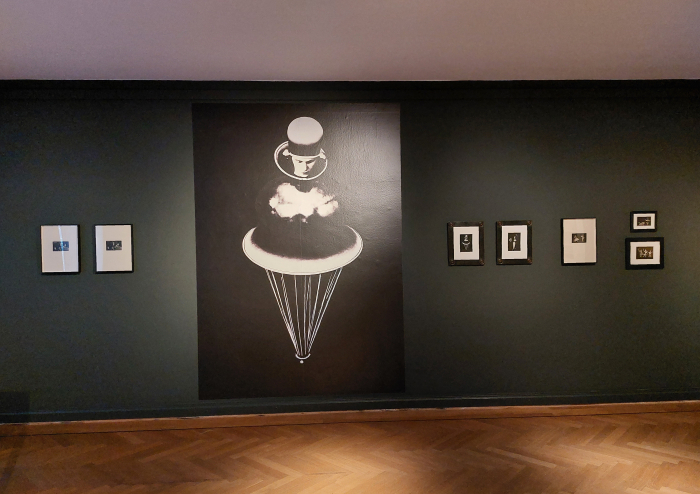
For all that Lucia Moholy's photo's were used to publicise and promote Bauhaus, its works, buildings and protagonists, one of the questions The Image of Modernity poses is were they documentary or artistic? Do Lucia Moholy's photos represent the objective work of someone documenting Bauhaus or the subjective work of an artist? Are they simply photos which seek to directly present objects and buildings, or a representation of the Neues Sehen of the period, a representation of the Constructivism of the period, are they works with an individual form language, works which reflect a position to aesthetics in photography, works which are the expression of Moholy's interpretation of contemporary positions to photography and of photography's relationships with society, on the role and function of photography?
¡¡¡¡SPOILER ALERT!!!!
The Bröhan Museum very much believe the latter, and in the course of The Image of Modernity build a convincing argument for their position; or perhaps more accurately, in the course of The Image of Modernity Lucia Moholy is allowed to explain why the Bröhan Museum's position is valid and justified.
And explains that through a mix of, on the one hand, photos which are just photos, simple photos, for example, of furniture that are just that, and on the other hand of photos of furniture that play with shadow and form and lighting and perspective and correlations. And a contrast which helps underscore, certainly for us, that where the composition is more complex, more studied, more involved, it is a very deliberate, carefully, conceptually, compiled shot. A photo as an expression of a position and theory.
Something which becomes even clearer in Moholy's photos of the Dessau buildings where one's attention is drawn to the geometry, the light, the shade, the space, the focus, the lines, the deliberateness and careful approach to the composition, and to that which the photo mediates over and above the actual building.
Or put another way, the views of the buildings she produced were as new as the buildings themselves, their exists a discourse between photo and content, and thus the photos were as much a part of the coming future Bauhaus demanded as the buildings.
And which, again certainly for us, make them anything but documentary photos.
Documentary photos, for us, are much more those snapshots of daily life at the Bauhauses, those photos of the workshops, the colleagues, the parties, those shots where no one is thinking about light or perspective, or content or composition. Photos to which Moholy's have no relation. Nor are Moholy's shots comparable with those compositions, those montages and plays with technique as exemplified through works by, for example, a Marianne Brandt or a Herbert Bayer.15 Moholy's photos are very much about encapsulating a component of the object or building, revealing the unseen, about highlighting correlations, and shifting perspectives by way of breaking with conventional ways of viewing architecture and our objects of daily life and thereby enabling a realigning of our relationships with our buildings and objects.
Represent an approach to photography that in many regards is artistic but not art, is technical but not documentation, is a response to the question what is photography. And which brings us back to the question of from where Lucia Moholy's interest in photography arose?

In 1972 Lucia Moholy noted that, following László's appointment to Bauhaus Weimar, "I decided to set aside my literary and philosophical leanings and adjust myself to the largely visual approach awaiting us in the new surroundings"16, but why photography? Why not painting? Or sculpture?
As far as we are aware there is no definitive answer17; however in a diary entry from 1915, shortly after her arrival in Wiesbaden, Moholy, then still Schulz, noted; "there awakens within me an interest in photography. I'm a passive artist, I can absorb impressions and would certainly be able to capture everyone from their best perspective, and subsequently, as a result of skilful chemical processes and the action of the impression on myself, reproduce them. I am not creative, not productive on my own, but I have a very fine absorptive capacity, am receptive"18, which as Rolf Sachsse notes is an understanding of photography not that far removed from that which she later practised at Bauhaus.19
A diary entry that tends to imply that Moholy's interest appears to have been as much in the technical side, the scientific side, of image creation as the interpretative; the, arguably, purely interpretive of painting and sculpture, genres which are technical, but not the new technical of that age. While the use of the term "absorb impressions" is very much a photographic process, and indeed the whole passage raises her in a most delicious manner to a living metaphor for the technical processes of photography. Makes Lucia a camera.
Technical processes of art, of creativity, which were very contemporary subjects in the early decades of the 20th century, were a near obsession amongst a great many early 20th century creatives, were part of the coming future that institutions such as Bauhaus sought to understand and approach. And technical aspects of photography that, arguably, would have been the central component of Moholy's 1923/24 apprenticeship with Otto Eckner in Weimar; Eckner being as he was a professional photographer rather than an artist the training would, one presumes, have been very much focussed, pun again intended, on the technical aspects, technical processes and "skilful chemical processes" of photography, rather than philosophical considerations on composition and content, similarly the courses she attended at the Königliche Akademie in Leipzig were of a technical nature, largely concerning editing and reproduction.20
And a concentrated study in the mid-1920s of technical approaches to photography, an approach to photography as the how rather than the what, and of reflections on relationships between creativity and technology, that brings us to the second of Lucia Moholy's very specific problems: László Moholy-Nagy.

In the summer of 1922 Lucia and László spent time in the Rhön, a mountainous region in central Germany, and where they discussed "the problem of 'production/reproduction'"21, that philosophical discourse of the early 20th century about what constitutes art if humans aren't directly responsible, a discussion that in many regards is ongoing, and increasingly complicated.
A discussion on production versus reproduction that led (a) to the 1922 article Produktion - Reproduktion in De Stijl's magazine NB, a text ascribed to László alone, but which, as best we can ascertain, can, must, be considered a joint text22, and which asserts the essential role of art in the development of the individual human as a sentient being, a process that, for Lucia and László, requires ever new, ever fresh, stimuli, a process in which reproduction "in the best case can only be regarded as a virtuoso affair", passive, but "Production (productive design)" is active; and a text in which Lucia and László argue for the need to "extend the devices (means) previously only used for reproductive purposes to productive purposes", to make reproductive technology active in creative processes, to integrate the means in the process rather than employ it as a passive agent. A position which has parallels to Lucia's representation of herself as a camera in the above quoted 1915 diary entry. And which in terms of photography meant shifting from the passive capturing of an object on a silver bromide plate, it's the early 1920s, to employing "the light sensitivity of the silver bromide plate to receive and fix light phenomena (momentary plays of light) created by us with devices incorporating mirrors or lenses".23
And a discussion on production versus reproduction that led (b) to the photogram: photos made without a camera through placing objects directly on photographic film, and exposing them to manipulated and controlled light, and which, according to Moholy, was very much a joint project, joint research, "we each of us followed a separate routine during the day", she recalled in 1972 of the early 1920s, "and in the evening continued our experiments with renewed zeal, if only in a temporary darkroom". Yet photograms which today are popularly ascribed to László alone. Photograms in whose development Lucia was involved but in whose official biography Lucia is absent.24
A denial of her place in the early research and the development, pun again intended, of the processes and positions that denies Lucia her place not only in the (hi)story of photography but in ongoing philosophical discussions on creativity in an evolving technical society. And a denial which also tends to block access to another aspect of her contribution to Bauhaus: the reproduction of artworks25. Preparing images of artworks for publication, for ensuring the works of Klee, Kandinsky, Feininger, Moholy-Nagy et al appeared in the most favourable manner possible in contemporary publications, a not unimportant task, certainly not as straightforward a task as it is today, a task which unquestionably her apprenticeship with Otto Eckner and studies in Leipzig enabled her to perform, a task which arguably her research into photograms enabled her to perform, a task that was much more technical than artistic, and that as a woman. We know! At Bauhaus!! A woman doing all the science and technology while the men painted!!! Whatever next!!!!
And a task that helps further underscore the long forgotten role the uncredited wives of the Meister played in and at the Bauhauses. And continue to play.
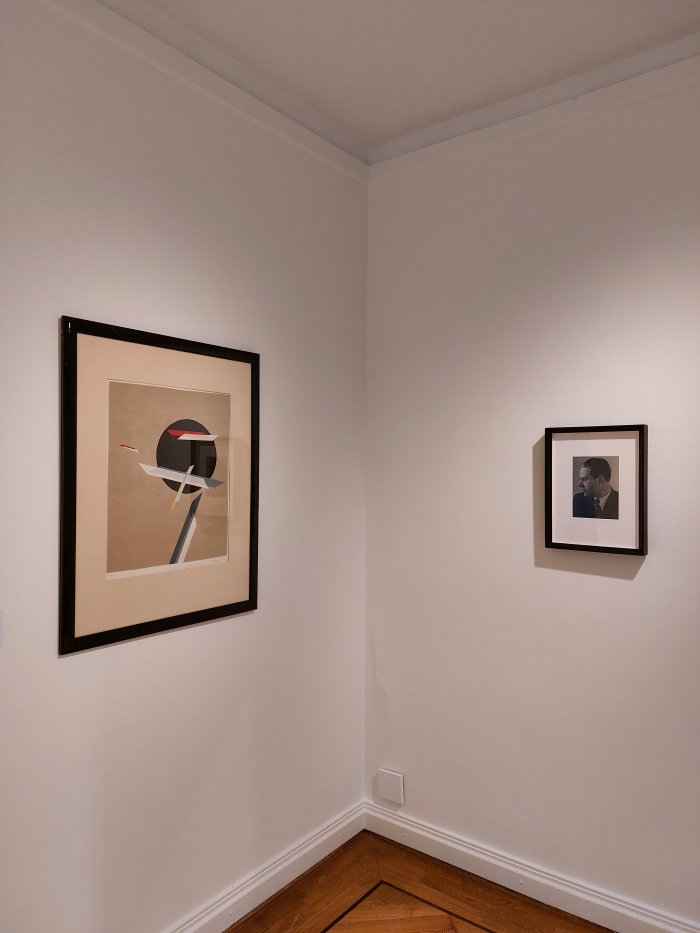
And while, and in contrast to the likes of a Mies van der Rohe or an Alvar Aalto who post-War made absolutely no effort to ensure Lilly Reich and Aino Allto respectively remained part of their own narrative, no post-War blame can be placed on László, who died in 1946, at the time he could have ensured that Lucia got her credit. It was a time, lest we forget, when the wife was very much understood as but the muse and helper, regardless of their actual contribution, a time where one had to be active to ensure the female in a partnership was afforded their rightful share of the credit, and, and whether we agree or not with the system, it was at that time very much up to the male to ensure everything was properly recorded. Society wasn't going to. Thus for all that Lucia spoke of her and László's cooperation as a "symbiotic alliance of two diverging temperaments"26, when her share of that work isn't acknowledged, isn't remembered, then that alliance may be symbiotic but is a commensalistic relationship not mutualistic.27 And which is a very pertinent reminder to anyone in a creative partnership, for all females working alongside a male partner who is publicly more prominent, to ensure that everything is correctly documented at the time. It may not be very romantic, may remind you that what you are doing is business rather than pleasure, but you almost certainly will need it in the future. (Hi)story has an awful memory. And men even worse memories.
In addition László was, in all probability, we don't know for certain we weren't there, but in all probability László was very complicit in giving Moholy's glass negatives to Gropius without telling Lucia. Nor insisting that Gropius contact Lucia to say he had them and agree conditions for their future use. Or contacting Lucia himself when he knew what Gropius was up to. He knew perfectly well what those negatives represented and whose property, whose creativity, whose legacy, they were.
Or put another way, at numerous points throughout the 1920s and 1930s László could have, should have, done an awful lot more to ensure the correct narrative was told, and thus help avoid Lucia's ongoing anonymity.28
In the room in which The Image of Modernity discusses the post-War tribulations with the glass negatives, there are photos of Gropius, Moholy-Nagy and Moholy, whereby in a most poetic manner Lucia is markedly and conspicuously turning her gaze away from Walter and László, denying their existence, ignoring them. Understandably. With you on that. ✊
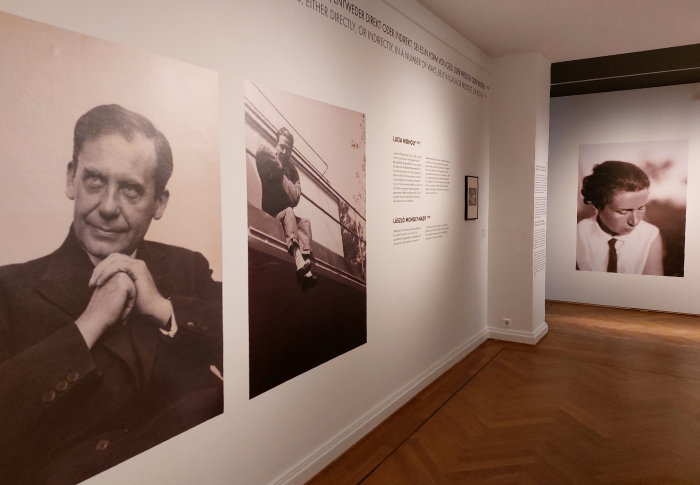
During the course of the Second World War Lucia Moholy stepped away from active, professional, object and architectural photography, and returned, if one so will, to her "literary and philosophical leanings", but didn't give up photography altogether; rather, post-War Moholy specialised in, and researched on, the microfilming of historical documents and texts, microfilming cultural artefacts by way of preserving them for coming generations, undertaking and leading in the course of the 1940s and 1950s numerous microfilming and archiving projects around the globe for institutions such as UNESCO. An engagement with microfilming which stands very much as an extension of photography as a technology rather than an art, and also one could argue of reproduction as production, that she had begun at Bauhaus Weimar and developed, yes pun intended, at Bauhaus Dessau. A neigh-on twenty year association with microfilming post-War that forms a much longer part of Moholy's biography than the five inter-War years at the Bauhauses, a neigh-on twenty year association with microfilming that is a further aspect of Lucia Moholy's biography that remains a lot less researched, underexposed, sorry, than it arguably should be; but a neigh-on twenty year association with microfilming which can't be properly explored without better understanding those five inter-War years.
That short period in eastern Germany in which, as The Image of Modernity convincingly argues, Lucia Moholy was an important protagonist in pursuing new ideas in photography, in advancing new ideas in photography, was an active contributor to discourses on photography. And thanks to the platform Bauhaus offered her was influential in the development of positions on photography, approaches to photography, understandings of photography, questioning what is photography. An influence which, on account of the widespread post-War publication of her photos as uncredited works, as anonymous works, and their thereby coalescence in an unfathomable pool of inter-War photography rather than standing as components of a considered and deliberate canon of work, was taken from her.
As was her influence on our understandings of Bauhaus, for all those re-constructed post-Bauhaus understandings, those that arose long after Bauhaus had ceased to be, when Bauhaus was being re-discovered by younger generations as individuals and objects and buildings rather than as a school. When Bauhaus became whats not whys. An influence that can be particularly well understood in The Image of Modernity via pages from the 1933 catalogue of the so-called Institut für Wissenschaftliche Projection, one of the earliest commercial photo agency's, commercial image publishers, and to whom Gropius gave the rights to use Moholy's negatives; negatives which they used anonymously, and which as The Image of Modernity helps elucidate are some of the more widely, and more influentially, reproduced photos of Bauhaus. Include many of those photos that are key in popular understandings of Bauhaus. And which for decades were, and often still are, published anonymously.
And an influence that can also be found in understandings of the Bauhaus Dessau buildings: viewing The Image of Modernity allows one to reflect on the similarity of contemporary photos of the Dessau buildings, certainly Gropius's school building, with the perspectives Moholy choose, and that many of today's photographs of Bauhaus buildings are but greater or lesser "virtuoso" reproductions of Moholy's; that over time some of Moholy's views of the Bauhaus buildings have become part of the popular understanding of the Bauhaus building. Which is to misinterpret Moholy's work; much of what Moholy did was introduce new perspectives in photography, explored buildings as much as photographed them, used photography to explain buildings as part of an environment, as relationships in relationship to other objects. And which if understood as such should encourage you to do the same.
Or put another way; as Lucia and László opined in 1922, in terms of art's function in developing sentient beings, "compositions, creations, are only useful if they produce new, hitherto unknown relationships".29
Repeating that which we know doesn't help us develop and evolve. For that we need to continually seek out new perspectives which allow access to the previously unseen.
Similarly a museum exhibition can only be meaningful in developing popular understandings and appreciations when it allows the viewer access to new, hitherto unknown relationships.
As an exhibtion The Image of Modernity very much enables such in context of Bauhaus, contemporary understandings of Bauhaus, and how that contemporary understanding of Bauhaus arose. Allows for new perspectives on Bauhaus and new appreciations of the Bauhaus (hi)story and post-Bauhaus (hi)story.
And that not least because of the individual, the biography of the individual, the character of the individual, in whose company one views, pun very much intended, The Image of Modernity. An individual whom you greet at the start of the exhibition as a stranger, but by the time you leave is like an old friend with whom you once lost touch, and now delight in the re-acquaintance. And together lament the lost years.

Presenting some 100 photos alongside various furniture and lighting objects, artworks and publications The Image of Modernity is a photo exhibition that isn't primarily about the photos; yes, the photos stand very much in the centre of the presentation and you should, must, engage with them as photos and form your own assessment and opinion on them, approach them as photos to be studied as photos; however, much more important is how the photos, the viewing of the photos and reflections on the photos help guide you through the principle narrative, that of Lucia Moholy.
In the late 1950s Lucia Moholy got some of her glass negatives back from Gropius30, began to start undoing some of the damage caused by those years of anonymity, and in recent years has began to start to receive the recognition and credit she deserves, if a greater part of that process has occurred since her death in 1989, aged 95; however, she is still a long way from receiving that which she is due, in context of her contribution to Bauhaus, her contribution to the popular reception of Bauhaus and her contribution to the development of photography, as a technology and as an art.
Exhibitions such as The Image of Modernity are important step in that process. Not only because presenting her photos enables a wider public to engage with and discourse over her photos, but through engaging with and discoursing on the photos one naturally follows paths to the whys, hows and wherefores of those photos. And in doing so Lucia Moholy becomes increasingly liberated from the anonymity in which (hi)story, and Walter Gropius, has held her captive, allows her contribution to be revealed, assessed, added to the contributions of others and enjoyed.
Thus while The Image of Modernity may not bring Lucia Moholy cash or prestige, it does allow her to reclaim her place on the helix of design (hi)story and of photography (hi)story. And thus helps bequeath her a permanence which is inarguably much more important than the transient follies of cash and prestige.
Lucia Moholy – The Image of Modernity is scheduled to run at the Bröhan Museum, Schlossstraße 1a, 14059 Berlin until Sunday January 22nd
Full information, including information on opening times, ticket prices, current hygiene rules, and details of the accompanying fringe programme can be found at www.broehan-museum.de/lucia-moholy-the-image-of-modernity

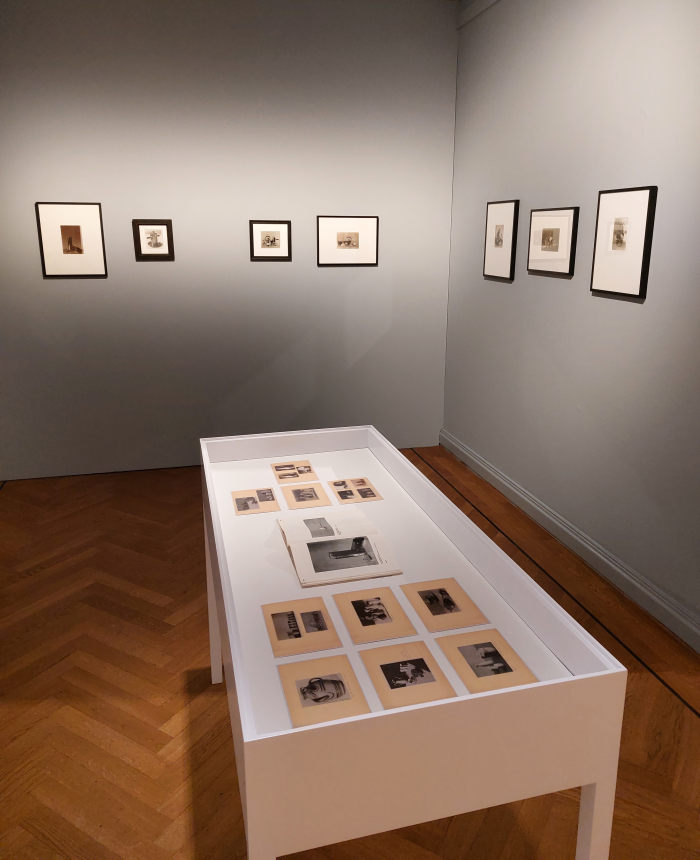


1Lucia Moholy, Summary of Events, unpublished document in Bauhaus Archiv, Berlin, quoted and fully referenced in Robin Schuldenfrei, Images in Exile: Lucia Moholy's Bauhaus Negatives and the Construction of the Bauhaus Legacy, History of Photography, Vol. 37, Nr. 2, May 2013
2As far as we are aware Lucia Schulz wasn't a formal student at Prague University, simply attended lectures as an unmatriculated observer, and thus never graduated from Prague University. If that was because of regulations regarding admission to university education in the Prague of that period, or for other, personal, reasons, we no know.......
3László was technically László Nagy, he added the "Moholy", a name derived from the the town of Mohol, today Mol in Serbia, near where was raised himself, the double-barrel apparently, being considered helpful, much like Ludwig Mies adding a "van der Rohe" onto his name to make him sound more Dutch, or the German designer Lutz Colani becoming Luigi Colani because all good designers came from Italy ... And, by all accounts László was commonly known amongst friends and acquaintances simply as Moholy, Moholy-Nagy being the more formal, Sunday, name .... Thus Lucia didn't so much take László's surname as buy into his constructed identity, became a component of an invented reality which sought a real identity, which is all very avant-garde. And a move which while potentially not feminist per se, does imply a very high degree of independence and a solid rejection of accepted traditions and conventions.
4Alongside Bauhaus publicity material The Image of Modernity also features a Standard Möbel catalogue masquerading as a Thonet catalogue in which, credited, photos by Moholy of the Moholy-Nagy home with Marcel Breuer steel tube furniture is to be seen. And which helps underscore that while steel tube and Thonet and Bauhaus aren't synonyms, they are closely related, do share a (hi)story. But each individually.
5Lucia Moholy, The Missing Negatives, The British Journal of Photography, Volume 130, January 7th, 1983
6ibid
7see, for example, Robin Schuldenfrei, Images in Exile: Lucia Moholy's Bauhaus Negatives and the Construction of the Bauhaus Legacy, History of Photography, Vol. 37, Nr. 2, May 2013 and Rolf Sachsse, Lucia Moholy, Edition Marzona, 1985 and also Lucia Moholy, The Missing Negatives, The British Journal of Photography, Volume 130, January 7th, 1983
8Ise Gropius's diaries, quoted and fully referenced in Mercedes Valdivieso, Lucia und László Moholy-Nagy Ein "symbiotische Arbeitsgemeinschaft", in Renate Berger [Ed] Liebe Macht Kunst. Künstlerpaare in 20. Jahrhundert, Böhlau Verlag, 2000 Footnote 29, page 83
9Lucia Moholy, Frau des 20. Jahrhunderts, unpublished text in Bauhaus Archiv Berlin, quoted and fully referenced in ibid, page 71
10Another often forgotten and overlooked aspect of Lucia Moholy's time at Bauhaus, and which, and as with her photography, in retrospect she wished she had ensured was better recorded, was her contribution to Bauhaus publications of all sorts. She was after all the one with experience in newspaper and book publishing, in editing, preparation and printing, and which is very much a subject demanding of further research. But not a subject for here.
11Gropius appears to have believed there was no agreement post-Bauhaus, Moholy insisted that of course there was, just doesn't appear to have been a written one, just a verbal one see Robin Schuldenfrei, Images in Exile: Lucia Moholy's Bauhaus Negatives and the Construction of the Bauhaus Legacy, History of Photography, Vol. 37, Nr. 2, May 2013
12As ever at this juncture it is always worth noting that in 1938 Gropius organised an exhibition at the MoMA New York about Bauhaus that only covered his tenure as director, ignored everything after he had left, ignored the last five years, the last third of the Bauhaus (hi)story, and which thus tended to place him as Mr. European Modernism, tended to elevate his role in the (hi)story of architecture and design above that of others....... And MoMA let him.
13see Robin Schuldenfrei, Images in Exile: Lucia Moholy's Bauhaus Negatives and the Construction of the Bauhaus Legacy, History of Photography, Vol. 37, Nr. 2, May 2013 and also Lucia Moholy, The Missing Negatives, The British Journal of Photography, Volume 130, January 7th, 1983 and also Rolf Sachsse, Lucia Moholy, Edition Marzona, 1985
14see, for example, Robin Schuldenfrei, Images in Exile: Lucia Moholy's Bauhaus Negatives and the Construction of the Bauhaus Legacy, History of Photography, Vol. 37, Nr. 2, May 2013
15For all that Bauhaus is closely associated with photography, be that documentary, technical or artistic, Bauhaus didn't actually have a photography department until 1929. Thus the greater part of that which is clumped together as "Bauhaus Photography" was the work of keen autodidacts and curious amateurs researching and fumbling their own ways forward, such as Lucia Moholy, not the consequence of structured teaching. And thus one of the more remarkable of the various Bauhaus chapters, one that helps one frame the question what was Bauhaus?
16Lucia Moholy, Marginalien zu Moholy-Nagy / Moholy-Nagy, Marginal Notes, Dokumentarische Ungereimtheiten... / Documentary Absurdities... Scherpe Verlag, Krefeld, 1972 page 61
17There may well be, we might just have missed it.
18Quoted in Rolf Sachsse, Lucia Moholy, Edition Marzona, 1985 page 7
19ibid, page 7-8
20see ibid page 24 for details
21Lucia Moholy, Das Bauhaus-Bild, Das Werk: Architektur und Kunst, Vol. 55, Nr. 6 1968 Available via https://www.e-periodica.ch/digbib/view?pid=wbw-002%3A1968%3A55%3A%3A1260#1371 (accessed 25.10.2022)
22see footnote 10 plus in Lucia Moholy, Marginalien zu Moholy-Nagy / Moholy-Nagy, Marginal Notes, Dokumentarische Ungereimtheiten... / Documentary Absurdities... Scherpe Verlag, Krefeld, 1972, Moholy makes several references to the fact that texts published under Lázló's name were in fact joint. And which is another location in which Lucia's anonymity can be identified
23L. Moholy-Nagy, Produktion - Reproduktion, De Stijl, NB Internationaal Maandblad voor Nieuwe Kunst Wetenschap en Kultur, 7, Juli 1922
24Lázló's estate are of a very different position, they "hesitate" to "acknowledge the claim put forward" that Lucia was "fundamentally" involved in the development and production of the earliest photograms, even accusing her of "perhaps" having "economic reasons" for claiming such, and advancing the opion that "Moholy-Nagy's photograms from the years 1922 to 1928 would presumably have been no different without Lucia's contribution" see Lucia, Sibyl and the Photograms in Renate Heyne [Ed.] Moholy-Nagy. The Photograms. Catalogue Raisonné, Hantje Cantz, 2009 We no know, we weren't there, and we're old enough and ugly enough to know to keep well out of arguments and controversies which don't concern us. That said, when married couples are both creatively active, and discuss their creativity, which as the, sadly, unnamed author(s) of Lucia, Sibyl and the Photograms acknowledge happened, there is invariably an influencing, things happen that otherwise wouldn't happen, it's a question of degree. And we don't see how conversations and discussions on creative processes can have no effect, particularly over such a long period, a long period of gestation, experimentation and researching. Without Lucia's input there would have been differences, it's a question of degree, and not something that can be assessed ex post facto, there's no control group. Similarly the question of in how far Lucia's influence continued into László's great many post-1928 photograms can't be unequivocally answered, only gauged.
25see Mercedes Valdivieso, Lucia und László Moholy-Nagy Ein "symbiotische Arbeitsgemeinschaft", in Renate Berger [Ed] Liebe Macht Kunst. Künstlerpaare in 20. Jahrhundert, Böhlau Verlag, 2000 page 72 In later years Moholy was specialised in, researched in microfilming of historical documents and texts, and thus further form of reproduction.
26Lucia Moholy, Marginalien zu Moholy-Nagy / Moholy-Nagy, Marginal Notes, Dokumentarische Ungereimtheiten... / Documentary Absurdities... Scherpe Verlag, Krefeld, 1972 page 55
27OK not exactly commensalistic because Lucia does suffer some damage, but we're not going to argue its parasitic. That implies a deliberateness, a degree of premeditation, an active attempt to cause damage, which is going far to far, isn't correct and can't be justified. So if symbiotic then commensalistic
28We may very well have missed moments where László was unequivocal about Lucia's role, as, for example, a Charles Eames always was about Ray's contribution being more than just colour and textiles. In addition, in Marginalien zu Moholy-Nagy / Moholy-Nagy, Marginal Notes, Dokumentarische Ungereimtheiten... / Documentary Absurdities... Scherpe Verlag, Krefeld, 1972 Moholy notes that while in the introduction to his 1929 book Von Material zu Architektur László acknowledges her contribution to the editing of his text, generally her role in his texts was always unmentioned, by both of them, and thus another context in which through a lack of recognition Moholy became but the wife of László. See also FN 10 and FN 22.
29L. Moholy-Nagy, Produktion - Reproduktion, De Stijl, NB Internationaal Maandblad voor Nieuwe Kunst Wetenschap en Kultur, 7, Juli 1922
30The Bauhaus Archiv Berlin, as the official custodian of Lucia Moholy's estate, are in possession of 230 of Lucia Moholy's glass negatives, and it is believed that around 330, thus ca 60% of the total, are still unaccounted for, and which may no longer exist or may be the basis for untold anonymous photos of Bauhaus, its works, buildings and protagonists, and thus a perpetuation of the incomplete understanding of Lucia Moholy' contribution to Bauhaus and to understandings of Bauhaus.......